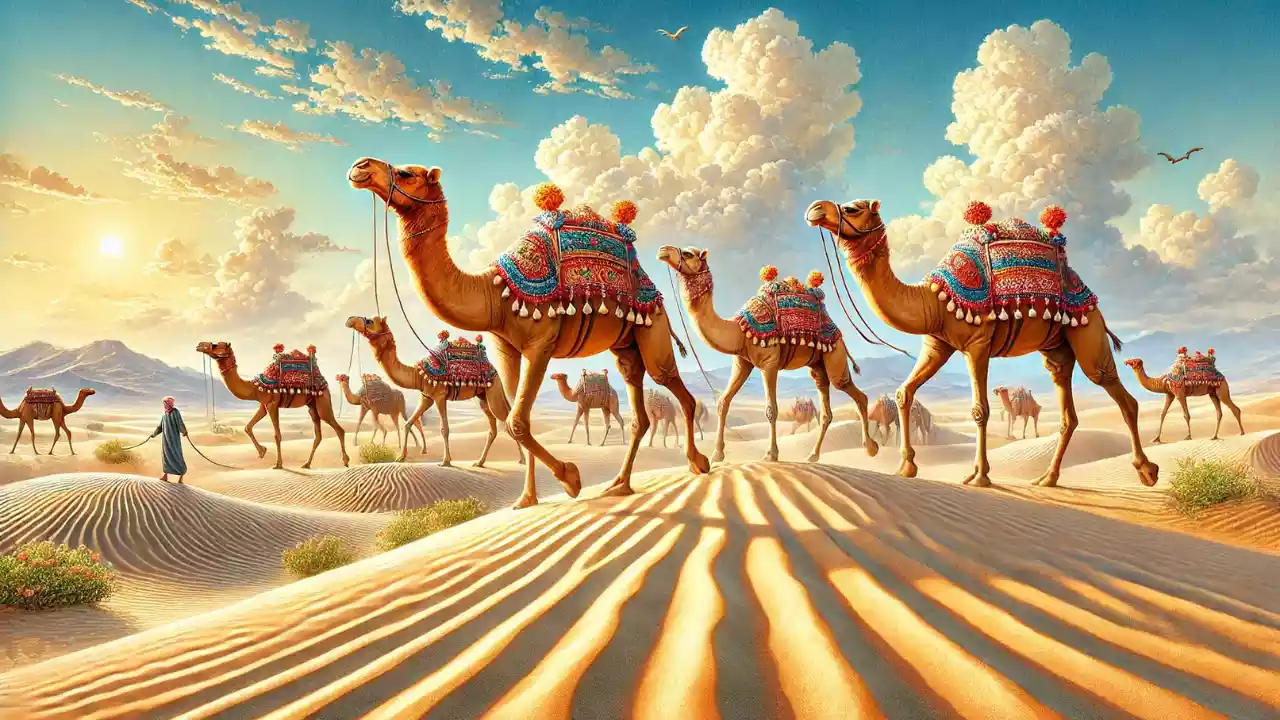Welcome to the world of camels! These resilient and majestic creatures are well-adapted to life in the desert. But do you know what we call a group of camels Let’s explore the collective nouns used for camels and dive into some fun examples to help you remember them.
Majestic Groups: Collective Noun for Camels
| Collective Noun |
|---|
| A Caravan of Camels |
| A Flock of Camels |
| A Train of Camels |
| A Herd of Camels |
| A Pack of Camels |
1. A Caravan of Camels
Explanation: The term “caravan” refers to a group of camels traveling together, especially across deserts. It emphasizes their role in long-distance travel and trade.
Examples:
- We watched as a caravan of camels made its way across the vast desert, each one carrying heavy loads.
- The ancient trade routes were often traversed by a caravan of camels, bringing goods from distant lands.
- At sunset, a caravan of camels arrived at the oasis, providing a stunning silhouette against the orange sky.
2. A Flock of Camels
Explanation: “Flock” is a general term used for groups of animals, often birds, but it can also apply to camels when emphasizing their collective movement.
Examples:
- A flock of camels grazed peacefully in the arid landscape, their large bodies casting long shadows.
- We observed a flock of camels from a distance, marveling at their ability to thrive in such a harsh environment.
- The nomads guided their flock of camels to the watering hole, ensuring each animal had a chance to drink.
3. A Train of Camels
Explanation: “Train” describes a line of camels moving in a single file, often seen in traditional caravan formations. It highlights their orderly and cooperative nature.
Examples:
- A train of camels stretched across the horizon, each animal following the one in front.
- The guide led a train of camels through the narrow mountain pass, their steady pace never faltering.
- In the early morning light, a train of camels set out on their journey, their bells jingling softly.
4. A Herd of Camels
Explanation: “Herd” is a common term for groups of large grazing animals, including camels. It emphasizes their social structure and grazing behavior.
Examples:
- We encountered a herd of camels resting under the shade of a lone acacia tree, their humps rising and falling with each breath.
- The desert landscape was dotted with a herd of camels, each one searching for sparse vegetation.
- The herders worked together to round up the herd of camels, preparing them for the journey ahead.
5. A Pack of Camels
Explanation: “Pack” is often used for groups of animals, especially those that work together. When used for camels, it emphasizes their role in carrying loads and working as a team.
Examples:
- A pack of camels was loaded with supplies for the expedition, each one carrying its share of the burden.
- We watched a pack of camels as they navigated the rocky terrain, their surefootedness impressive to behold.
- The traders relied on a pack of camels to transport their goods across the desert, ensuring a steady flow of commerce.
Conclusion
Camels are remarkable creatures that embody strength, endurance, and adaptability. Knowing the collective nouns like a caravan, a flock, a train, a herd, and a pack of camels helps us describe these majestic animals in their various group settings. Next time you see camels, use these terms to talk about their impressive gatherings.
